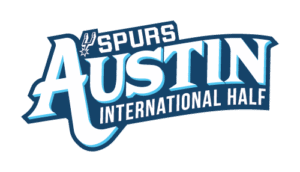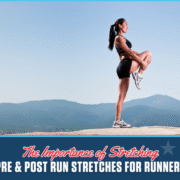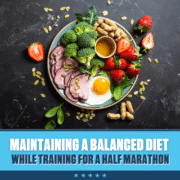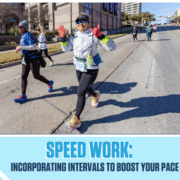The Importance of Stretching: Best Pre-Run and Post-Run Stretches for Half Marathoners
Whether you’re logging your long run miles or heading out for a recovery jog, stretching is one of the simplest ways to keep your body strong, mobile, and injury-free. For half marathoners, a regular stretching routine can make a major difference in how you feel during training and how quickly you recover after tough workouts.
Why Stretching Matters
Running engages major muscle groups—especially your hamstrings, quads, calves, and hips. Over time, these muscles tighten from repeated use, limiting your range of motion and increasing the risk of strain or imbalance.
Stretching helps by:
- Improving flexibility: Looser muscles move more efficiently, helping you maintain good running form.
- Preventing injury: Targeted stretches reduce tightness that can lead to common runner issues like IT band syndrome or shin splints.
- Aiding recovery: Gentle stretching after a run promotes blood flow, helping your muscles repair and recover faster.
Pre-Run: Dynamic Stretching
Before you run, your goal is to warm up and prepare your muscles for movement. Dynamic stretches—active movements that mimic running—get your blood flowing and joints ready.
Try these before you hit the road:
- Leg Swings: Hold onto a wall and swing one leg forward and backward 10–15 times. Repeat side to side.
- Walking Lunges: Step forward into a lunge, keeping your front knee over your ankle. Alternate legs for 10–12 steps.
- High Knees: Jog in place while lifting your knees toward your chest for 30 seconds.
- Butt Kicks: Lightly kick your heels toward your glutes for 30 seconds to warm up your hamstrings.
These movements boost circulation and prep your body for the effort ahead.
Post-Run: Static Stretching
After your run, focus on static stretches—holding each position for 20–30 seconds to release tension and improve flexibility.
Here are a few go-to post-run stretches:
- Standing Quad Stretch: Pull one foot toward your glutes, keeping knees close together. Switch legs.
- Hamstring Stretch: Sit on the ground with one leg extended, reach toward your toes, and hold.
- Calf Stretch: Step one foot back, keeping your heel on the ground and front knee bent.
- Hip Flexor Stretch: In a lunge position, drop your back knee and press your hips forward gently.
- Figure Four Stretch: Lying on your back, cross one ankle over the opposite knee and gently pull your leg toward your chest.
Breathe deeply and take your time—this is your opportunity to unwind and support recovery.
Make Stretching a Habit
Consistency is key. Aim to include dynamic stretches before every run and static stretches afterward. It only takes a few minutes, but the benefits add up mile after mile—helping you stay limber, strong, and ready to conquer your next race.
Your body will thank you at the finish line!



